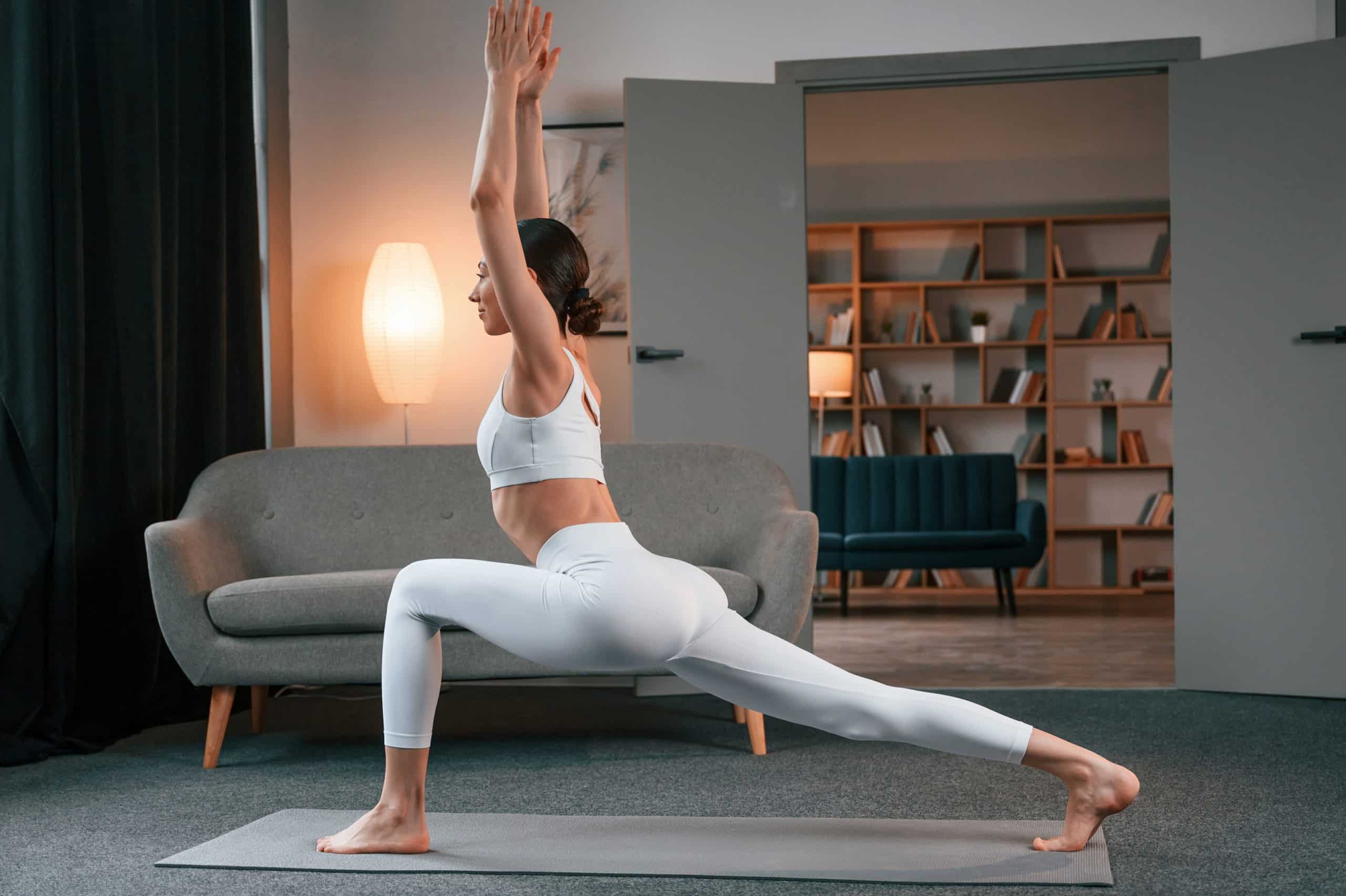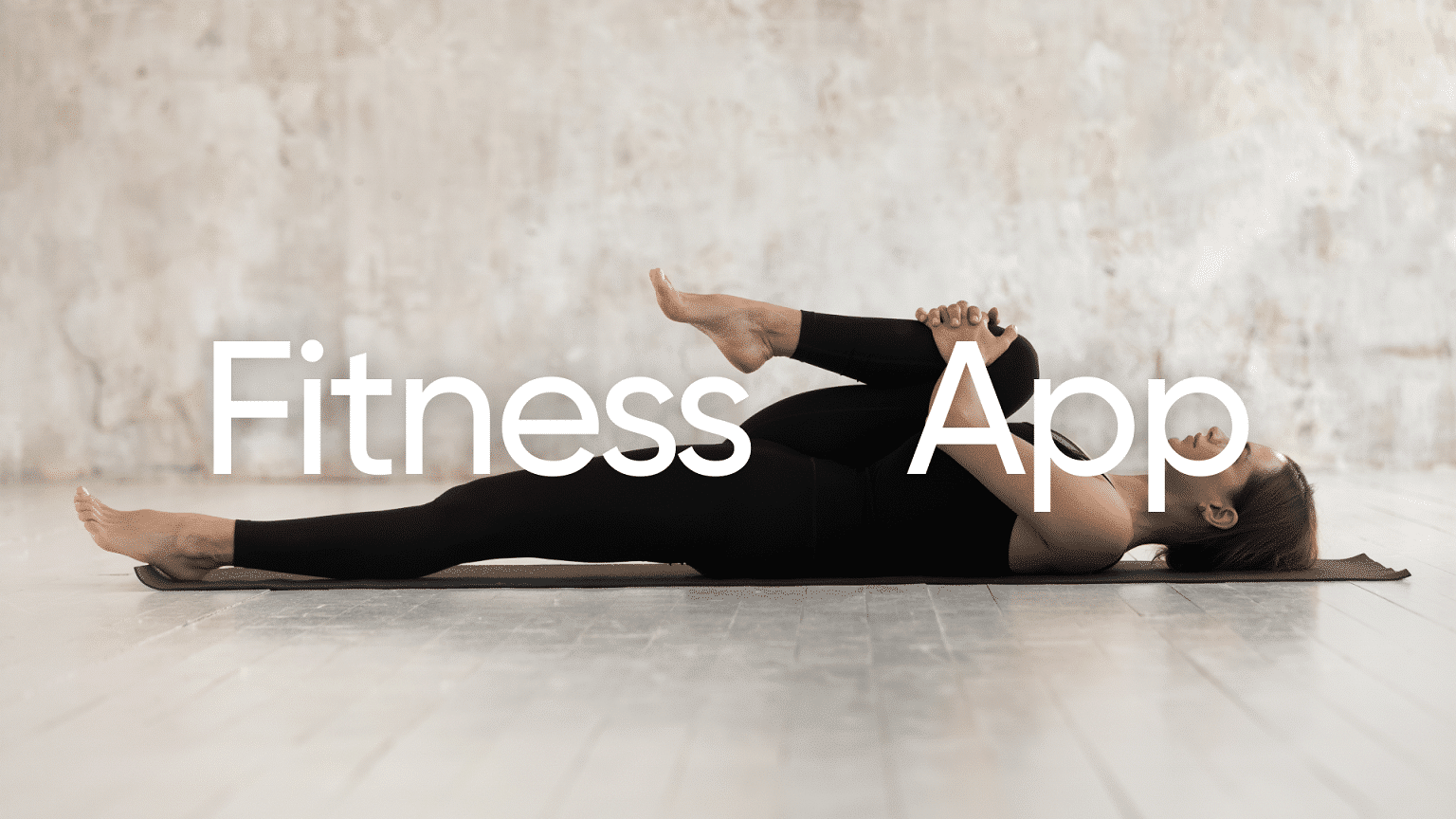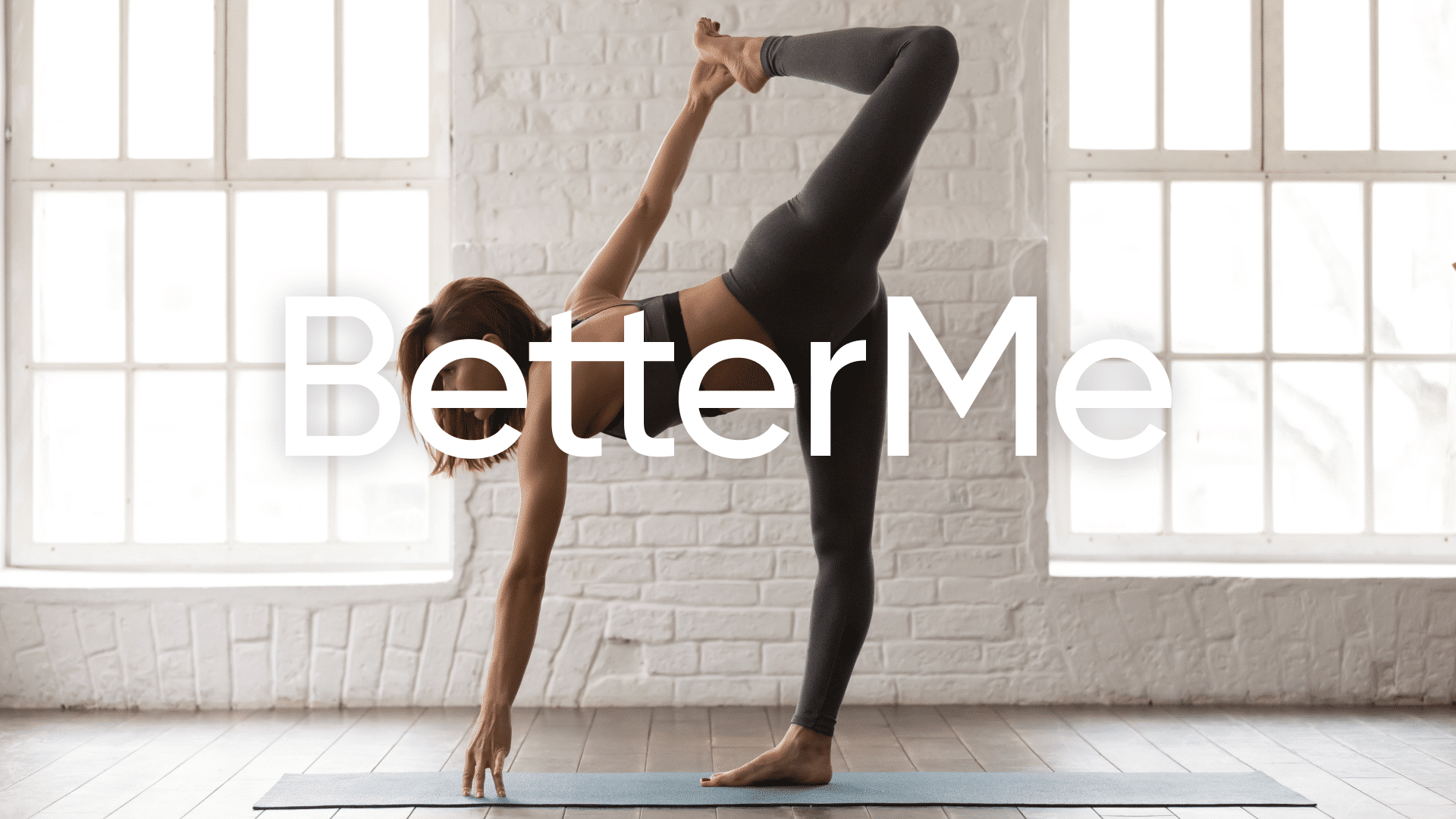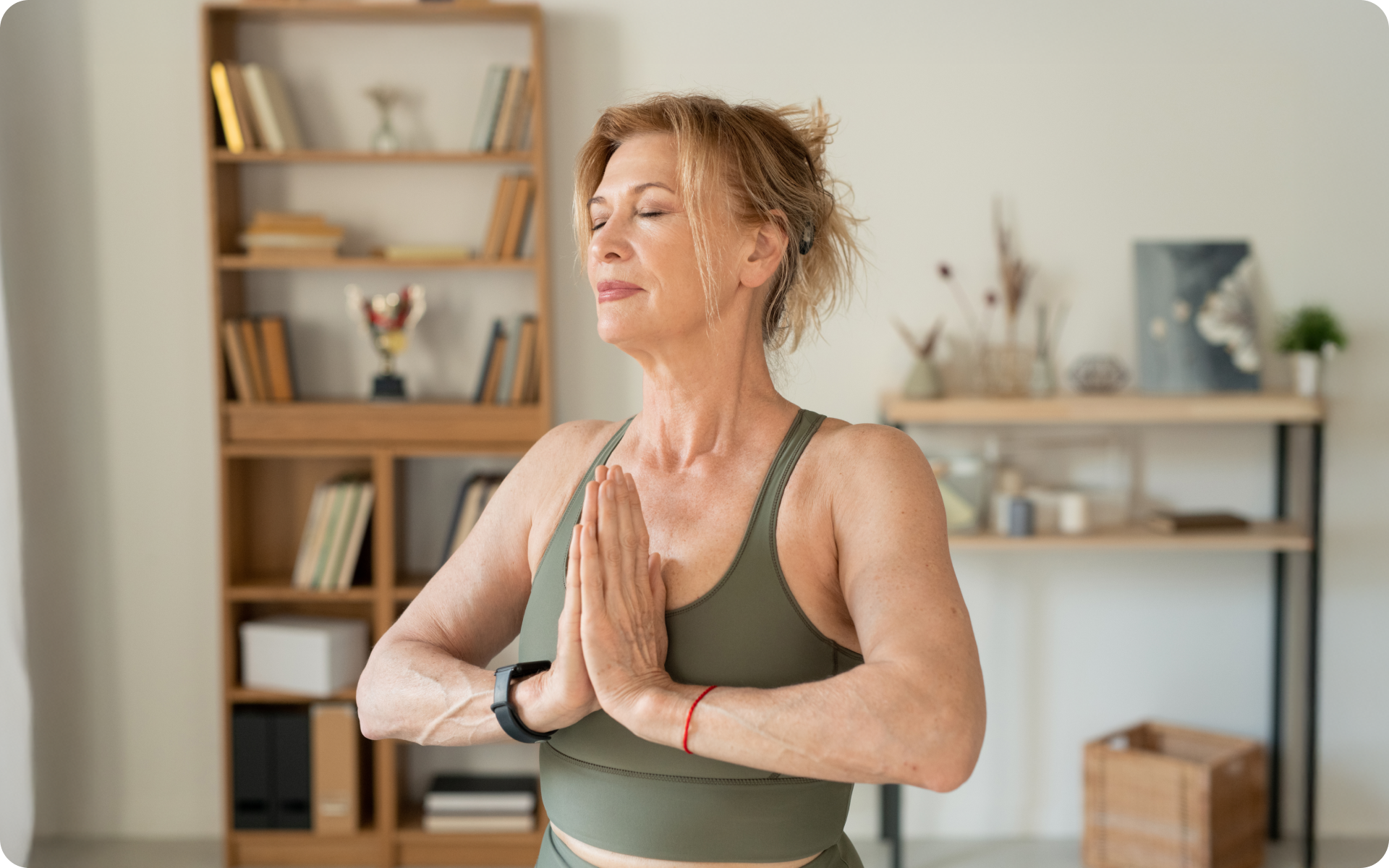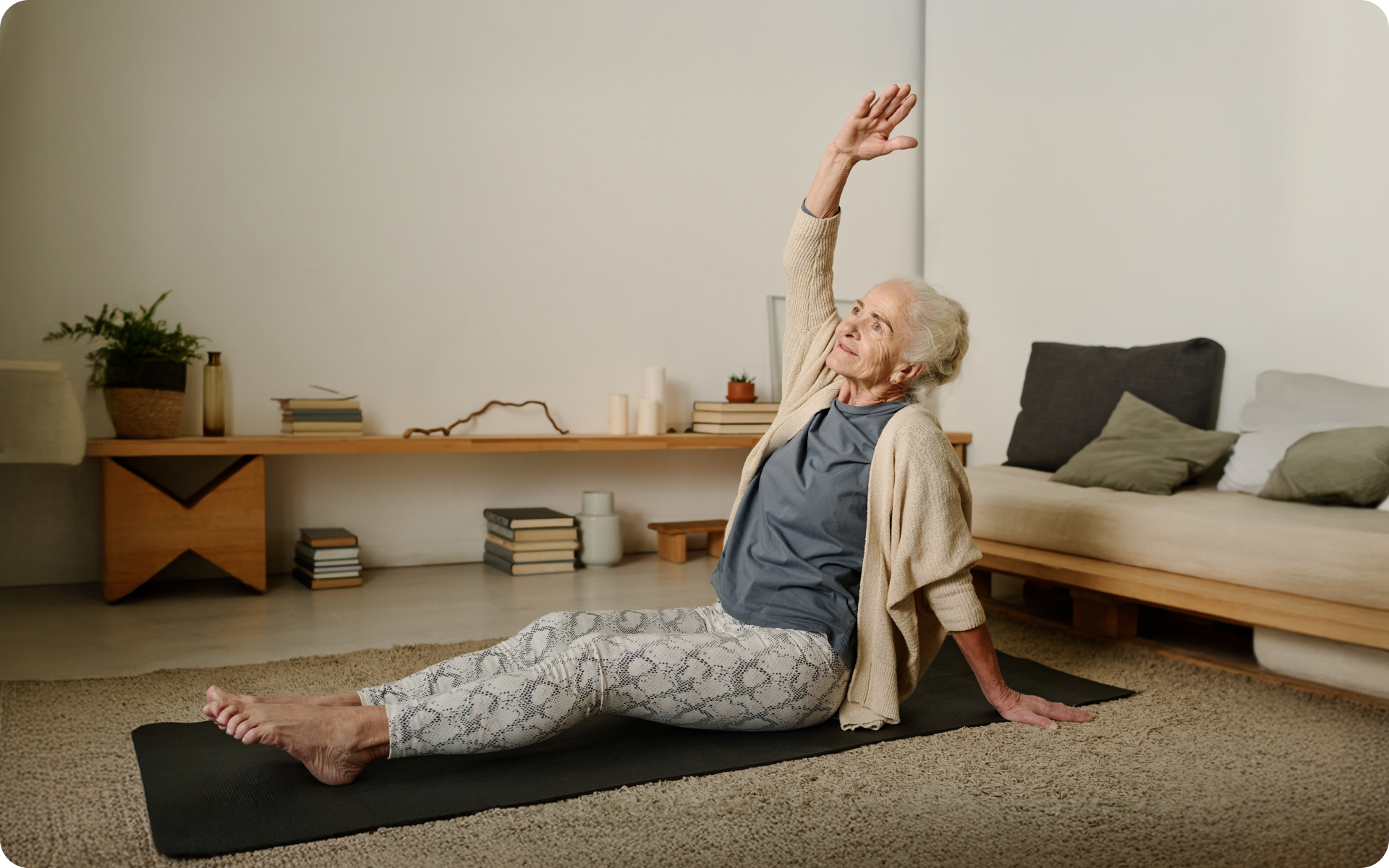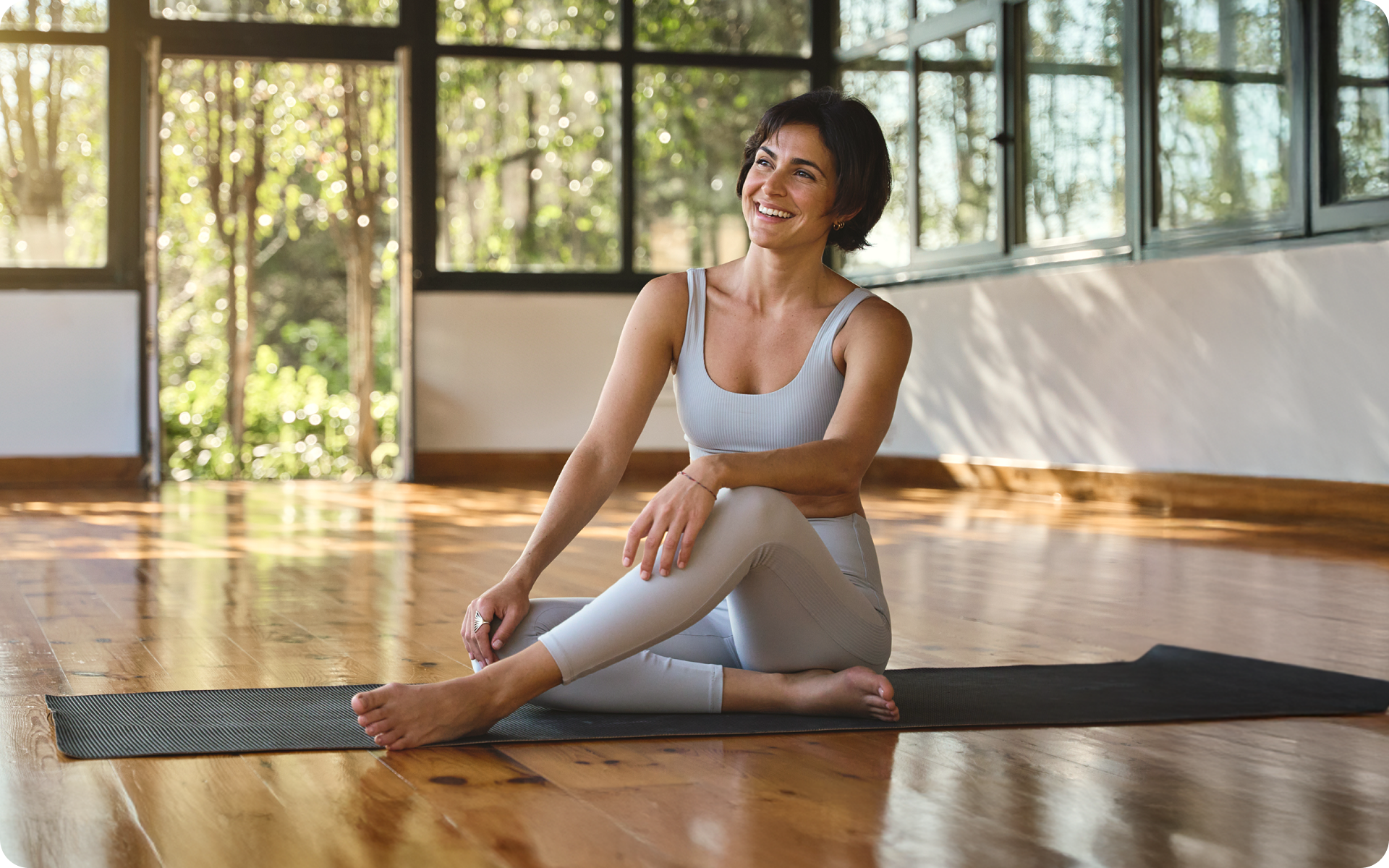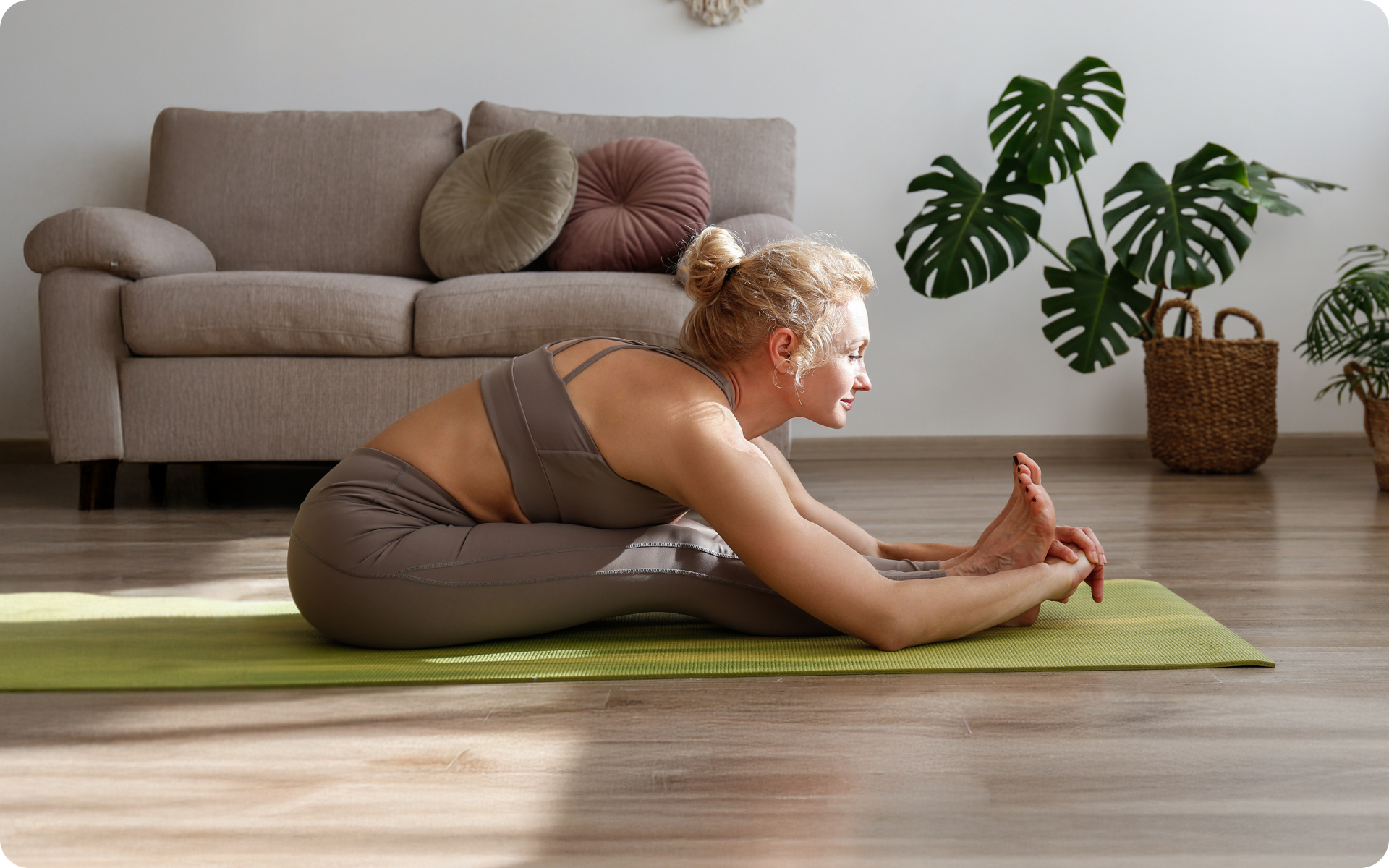Yoga continues to gain recognition as a holistic approach to health and well-being. If all you picture when you hear the word yoga is a calm, serene environment with people gently stretching and deep breathing, you might be surprised to learn that there’s a whole world of yoga styles out there.
Each type offers unique experiences and benefits, catering to various preferences and goals (2) (1) . Understanding the different styles and their distinct characteristics can help you decide what to do, and when.
This comprehensive guide goes into a wide range of yogic techniques, from the dynamic Ashtanga to the soothing Yin yoga, providing insights into their origins, benefits, and practice methods. Here’s what you need to know to decide which type best aligns with your needs and objectives.
What Are Types of Yoga?
Yoga types refers to the various styles, disciplines, and approaches that have evolved within the practice of yoga over time.
These types often differ in terms of their focus, pace, and techniques, such as postures (asanas), breathing exercises (pranayama), and meditation methods.
This phrase emphasizes the diversity within the world of yoga, acknowledging that there is no one-size-fits-all approach and that each style offers unique experiences and benefits to cater to a wide range of preferences, goals, and levels of expertise.
How Many Types of Yoga Are There?
There isn’t a definitive number of yoga types, as the practice has evolved and branched out into numerous styles over time. However, there are around 20 widely recognized and practiced yoga styles, with some sources listing even more variations and substyles.
The origins of yoga date back thousands of years, and its evolution has led to the development of various approaches that cater to different goals and preferences. Some of the well-known types include Hatha, Ashtanga, Vinyasa, Kundalini, Iyengar, Bikram, and Yin yoga.
Each style offers unique experiences and benefits, with variations in focus, pace, and techniques. For example, Hatha yoga is often considered a gentle introduction to basic postures, while Ashtanga is more vigorous and physically demanding.
The diversity in types of yoga allows practitioners to find a style that suits their individual needs and objectives, making yoga an inclusive and adaptable practice for people of all ages, fitness levels, and backgrounds.
BetterMe app is a foolproof way to go from zero to a weight loss hero in a safe and sustainable way! What are you waiting for? Start transforming your body now!
Are There Different Types of Yoga?
Yes, there are various types of yoga that cater to different preferences, goals, and levels of expertise. The categorization of these styles can be based on their origin, focus, intensity, or specific techniques employed (1). Below we discuss the different types of yoga and their benefits:
What Are The 5 Original Types of Yoga?
The five original types of yoga, often referred to as the five classical paths of yoga, are Jnana Yoga, Bhakti Yoga, Karma Yoga, Raja Yoga, and Hatha Yoga. These paths represent different approaches to attaining self-realization and spiritual growth, each focusing on a unique aspect of human experience and consciousness.
1. Jnana Yoga
This path is centered around knowledge, wisdom, and intellectual understanding. It emphasizes self-inquiry and the study of sacred texts to achieve spiritual insight and liberation.
2. Bhakti Yoga
Known as the path of devotion or love, Bhakti Yoga focuses on cultivating a deep emotional connection to the divine through prayer, chanting, and acts of worship.
3. Karma Yoga
The path of selfless action, Karma Yoga encourages practitioners to perform their duties in life without attachment to the outcomes, ultimately purifying the mind and achieving spiritual growth.
4. Raja Yoga
Often called the “royal path,” Raja Yoga is a systematic approach to controlling the mind through meditation, ethical practices, and the eight limbs of yoga outlined by Patanjali in the Yoga Sutras.
5. Hatha Yoga
This path is most commonly associated with physical postures (asanas) and breathing exercises (pranayama). Hatha Yoga aims to balance the body and mind, preparing the practitioner for deeper meditative practices.
These five original paths of yoga offer diverse methods for attaining spiritual growth and self-realization, highlighting the multifaceted nature of yoga as both a physical and spiritual practice.
While modern yoga styles have evolved and expanded, these classical paths continue to serve as a foundation for many contemporary practices.
Read more: Restorative Yoga Poses – A Restful Practice for Better Health
What Are The 4 Main Types of Yoga?
These types of yoga are categorized according to their focus on physical practice, breathwork, meditation, and philosophy. The four types are Hatha Yoga, Pranayama, Dhyana Yoga, and Jnana Yoga.
Hatha Yoga
This type emphasizes physical postures (asanas) and is often considered the foundation of most modern yoga styles. Hatha Yoga aims to balance the body and mind, preparing the practitioner for deeper spiritual practices.
Pranayama
Pranayama focuses on breath control and regulation, using various breathing techniques to cultivate energy (prana) and balance the mind-body connection. It is often integrated into other yoga styles as a complementary practice.
Dhyana Yoga
Also known as meditation yoga, Dhyana Yoga is the practice of cultivating mental focus and inner stillness. Through various meditation techniques, practitioners develop mindfulness, concentration, and ultimately, self-realization.
Jnana Yoga
This path is centered around knowledge, wisdom, and intellectual understanding. It emphasizes self-inquiry, critical thinking, and the study of sacred texts to achieve spiritual insight and liberation.
What Are The Most Popular Types of Yoga?
The most popular types of yoga, which are widely practiced and recognized around the world, include:
1. Hatha Yoga
Often considered a gentle introduction to basic postures, Hatha yoga focuses on balancing the body and mind through a combination of physical poses (asanas), breathing techniques (pranayama), and meditation.
2. Vinyasa Yoga
Characterized by its fluid transitions between poses, Vinyasa yoga synchronizes movement with breath, creating a dynamic and continuous flow that helps build strength, flexibility, and endurance.
3. Ashtanga Yoga
A more vigorous and physically demanding style, Ashtanga yoga follows a specific sequence of poses designed to purify the body and mind while building strength, stamina, and flexibility.
4. Iyengar Yoga
Emphasizing precise alignment and the use of props (such as blocks, straps, and bolsters) to support the body, Iyengar yoga promotes the development of strength, balance, and flexibility while minimizing the risk of injury.
5. Kundalini Yoga
Combining physical postures, breath control (pranayama), meditation, and chanting, Kundalini yoga aims to awaken the practitioner’s spiritual energy and promote self-awareness, inner peace, and transformation.
6. Bikram Yoga
Practiced in a heated room, Bikram yoga consists of a specific sequence of 26 postures and two breathing exercises, designed to systematically work every part of the body and improve overall health and well-being.
7. Yin Yoga
A slower-paced style that involves holding passive poses for extended periods, Yin yoga targets deep connective tissues, promoting relaxation, flexibility, and the release of tension.
Intense sweat sessions, working weight loss tips, lip-smacking recipes come in one package with the BetterMe app. And all of it is at your fingertips, start transforming your life now!
Which Types of Yoga Is The Best?
There is no one-size-fits-all answer to which type of yoga is the best, as it depends on an individual’s personal preferences, goals, and physical abilities (3). To determine the most suitable yoga style, consider the following factors:
Fitness Level
- Beginners: Hatha yoga is often recommended for its gentle introduction to foundational postures and basic breathing techniques.
- Intermediate: Vinyasa yoga offers a dynamic flow that can help build strength, flexibility, and endurance.
- Advanced: Ashtanga yoga is more physically demanding and structured, providing a challenge for experienced practitioners.
Desired Intensity
- Low intensity: Yin yoga and Restorative yoga focus on relaxation, stress relief, and improving flexibility through passive poses held for longer periods.
- Moderate intensity: Hatha yoga and Iyengar yoga provide a balanced practice that emphasizes alignment, strength, and flexibility.
- High intensity: Power yoga, Ashtanga yoga, and Bikram yoga offer vigorous workouts that build strength, stamina, and endurance.
Flexibility and Alignment
- Iyengar yoga prioritizes precise alignment and uses props to support the body, making it suitable for those who want to improve their posture and flexibility.
- Vinyasa and Ashtanga yoga also emphasize correct alignment but with a faster-paced flow that can help increase flexibility over time.
Stress Reduction and Relaxation
- Yin yoga, Restorative yoga, and gentle Hatha yoga classes focus on relaxation, deep stretching, and stress relief, making them ideal choices for those looking to unwind and find mental calm.
Spiritual Growth
- Kundalini yoga combines physical postures, breath control, meditation, and chanting to promote spiritual awakening and self-awareness.
- Jnana, Bhakti, or Raja yoga are classical paths that focus on wisdom, devotion, and mental control, respectively, offering deeper spiritual exploration.
Specific Health Goals
- Prenatal yoga is designed to support pregnant women by relieving physical discomfort and preparing the body for childbirth.
- Chair yoga and Adaptive yoga cater to individuals with limited mobility or physical challenges, offering modified poses and support to make the practice accessible.
Read more: Hot Yoga: Calories Burned, Pros, Cons and Frequently Asked Questions
Frequently Asked Questions
What are the different types of breathing in yoga?
Breathing techniques, or pranayama, are an essential aspect of yoga practice. Some common types of breathing techniques include:
- Ujjayi Pranayama (Victorious Breath): Characterized by a soft, audible sound created by constricting the back of the throat while inhaling and exhaling through the nose.
- Nadi Shodhana (Alternate Nostril Breathing): Involves inhaling and exhaling alternately through each nostril, promoting balance and relaxation.
- Kapalabhati Pranayama (Skull-Shining Breath): A rapid, forceful exhalation followed by a passive inhalation, intended to cleanse the lungs and energize the body.
- Bhastrika Pranayama (Bellows Breath): Involves forceful and rapid inhales and exhales, stimulating the body and increasing alertness.
- Sitali Pranayama (Cooling Breath): Inhaling through a curled tongue and exhaling through the nose, providing a cooling effect to the body.
Which type of yoga is best?
The best type of yoga depends on individual preferences, goals, and physical abilities. Factors to consider when choosing a yoga style include fitness level, desired intensity, flexibility, stress reduction needs, and spiritual inclinations.
Trying different styles and consulting with teachers or healthcare professionals can help determine the most suitable practice for one’s personal circumstances.
What are the hard types of yoga?
Hard or challenging types of yoga typically involve more advanced postures, faster-paced flows, or increased physical demands. Some examples of challenging yoga styles are:
- Ashtanga Yogа: A structured and physically demanding practice that follows a specific sequence of poses.
- Power Yoga: A vigorous, fitness-based approach to yoga that builds strength, stamina, and endurance.
- Bikram Yoga: Practiced in a heated room, this style consists of 26 postures and two breathing exercises, which can be challenging due to the heat and intensity.
- Rocket Yoga: A dynamic and fast-paced variation of Ashtanga yoga that includes advanced poses and inversions.
Does the type of yoga matter?
Yes, the type of yoga matters as it can significantly impact one’s experience, personal growth, and the benefits derived from the practice. Different yoga styles cater to various preferences, goals, and levels of expertise, making it essential to choose a style that aligns with one’s unique needs and objectives.
Is yoga all the same?
No, yoga is not all the same. There are numerous styles and approaches to yoga, each emphasizing different aspects of the practice, such as physical postures, breathwork, meditation, or philosophy.
The diversity in types of yoga allows practitioners to find a style that suits their individual needs and objectives, making yoga an inclusive and adaptable practice for people of all ages, fitness levels, and backgrounds.
The Bottom Line
The various types of yoga cater to a wide range of preferences, goals, and levels of expertise. By understanding the differences between these styles and considering factors such as fitness level, desired intensity, flexibility, stress reduction needs, and spiritual inclinations, individuals can find a yoga practice that resonates with their unique needs and objectives.
DISCLAIMER:
This article is intended for general informational purposes only and does not serve to address individual circumstances. It is not a substitute for professional advice or help and should not be relied on for making any kind of decision-making. Any action taken as a direct or indirect result of the information in this article is entirely at your own risk and is your sole responsibility.
BetterMe, its content staff, and its medical advisors accept no responsibility for inaccuracies, errors, misstatements, inconsistencies, or omissions and specifically disclaim any liability, loss or risk, personal, professional or otherwise, which may be incurred as a consequence, directly or indirectly, of the use and/or application of any content.
You should always seek the advice of your physician or other qualified health provider with any questions you may have regarding a medical condition or your specific situation. Never disregard professional medical advice or delay seeking it because of BetterMe content. If you suspect or think you may have a medical emergency, call your doctor.
SOURCES:
- Exploring How Different Types of Yoga Change Psychological Resources and Emotional Well-Being across a Single Session (2020,nih.gov)
- Yoga – health benefits (2022,nih.gov)
- Yoga for health (2022,nih.gov)
